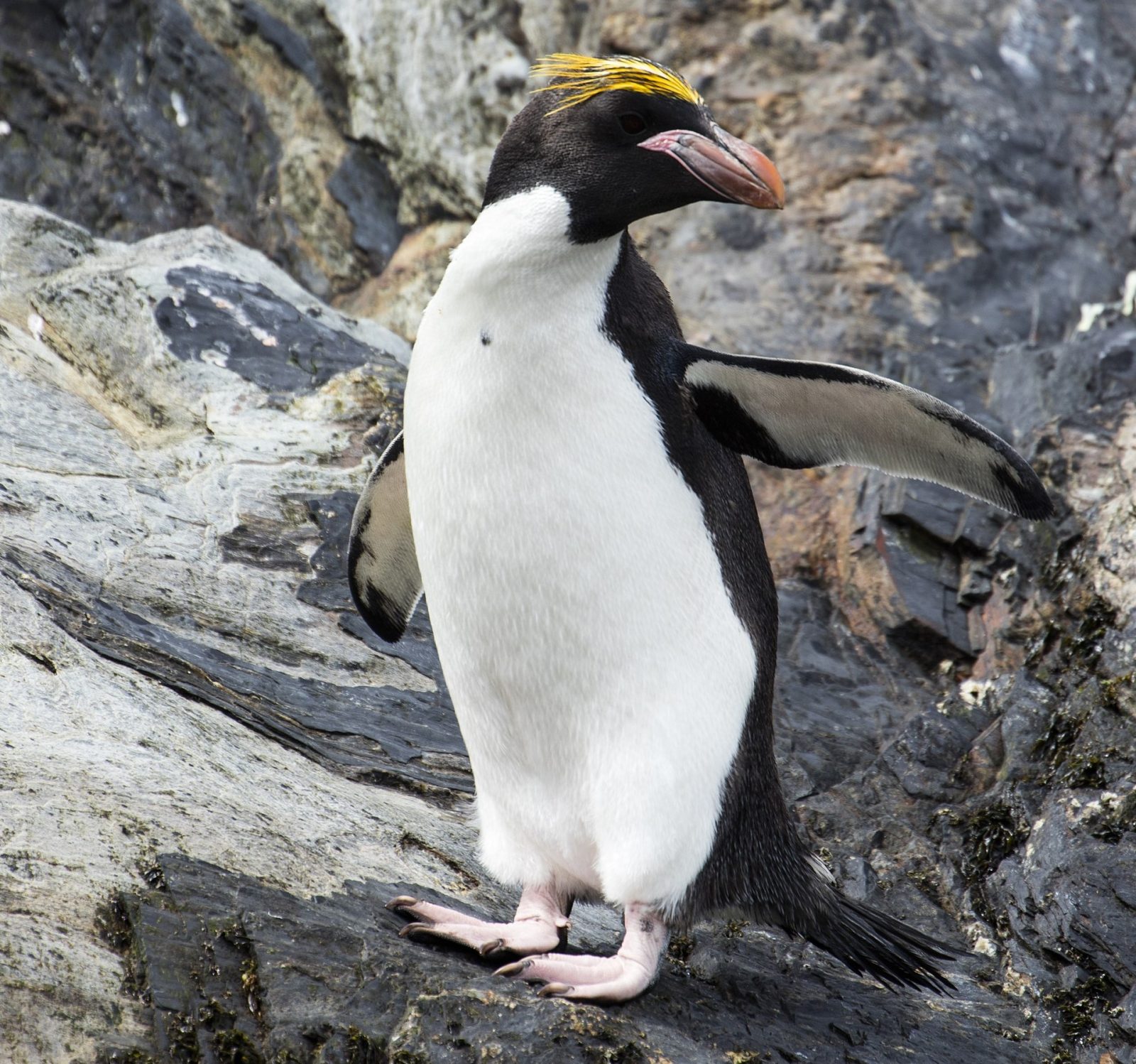
Macaroni Penguin
Found from the subantarctic to the Antarctic peninsular, it is one of the 6 crested penguins and is most closely related to the royal penguin.
It (like others penguins) do not have hair on their head, but never the less, this species has a bunch of bright yellow feathers sticking back on each side of its face – superficially like Macaroni. Adults can weigh up to 5.5kg and up to 78cm. The male and females look incredibly similar, though the male is larger, and with a larger bill.
This species diet is a variety of crustaceans, mainly krill, as well as small fish and cephalopods; the species consumes more marine life annually than any other species of seabird. They moult once a year, and have to spend 3-4 weeks on shore, until it is fully regrown. They gather together in large numbers for breeding, with around 100,000 in most breeding colonies.
The whole population is estimated at 18 million individuals (looking at other sources this number is far smaller, with some sources suggesting 11 and others 6 million – it would appear that the most regularly stated numbers suggest that in the last 36 years, the population has declined from a little over 9 million, down to a little over 6 million at the current time.
It is considered vulnerable, and can roam far, being seen from time to time in Southern Africa, Brazil and Australia.
Eating a variety of squid, crustations and small fish, it very much depend on where they live. Around antarctica, during the breeding season they will eat almost exclusively krill.
They are thought to be the largest consumer of sea food, consuming an estimated 9.2 million tonnes of krill each year.
Predators include both marine mammals and birds. The leopard seal, Antarctic fur seal, Subantarctic fur seal, and killer whale hunt adult macaroni penguins in the water. Macaroni colonies suffer low rates of predation if undisturbed; predators generally only take eggs and chicks that have been left unattended or abandoned. Skua species, the snowy sheathbill , and kelp gull prey on eggs, and skuas and giant petrels also take chicks and sick or injured adult birds.
Conservation work is going on, but there is still a large amount of question about how things are going (as is clear, given the confusion of the current wild population).
A 2008 study raised an issue, where the female penguins abilities to reproduce are reduced as a result of negative effects of climate and fishing induced reductions in krill. They are currently listed as vulnerable, but if this were to continue or indeed get worse, this could push them fast towards extinction.
Below, you will find an outtake of a documentary that deals with these animals. Below that you will find a list of any articles which mention this species on this website.
Below that, we hope to list any opportunities to see this species in the wild (should you work in conservation or tourism on this species, we would love to hear from you, the process of adding a destination is very simple. Click here to read more. Any links will appear at the bottom of the page